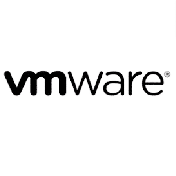Seminarinhalt
To help you prepare, the exam objectives highlight the task areas you can expect to see covered in the exam. These objectives apply to both JBoss EAP 7.
Hinweis:Sie werden während der Prüfung mit einem Red Hat Enterprise Linux® 7 System arbeiten. Erfahrungen in der Arbeit mit Linux oder UNIX sind daher von Vorteil. Diese Prüfung hat nicht zum Ziel, Ihre Kenntnisse in der Systemadministration nachzuweisen, und auch umfangreiche Erfahrungen mit Linux/UNIX sind nicht erforderlich. Ihnen steht für Ihre Arbeit eine komplette Desktop-Umgebung zur Verfügung sowie zusätzlich zu den man-Seiten und anderen Unterlagen von Red Hat Enterprise Linux eine Referenzliste mit grundlegenden Befehlen.
Verwenden Sie das kostenfreie Red Hat Preassessment Tool für Ihren Ausbildungserfolg!
Programm
- Install and manage JBoss EAP
- Install JBoss EAP to a specific location on a system
- Configure minimal security requirements for accessing and managing JBoss EAP
- Access and manage JBoss EAP using the provided tools
- Configure and start a multi-node, multi-server JBoss EAP domain spanning at least two hosts with multiple servers per host
- Configure JBoss EAP domains, hosts and servers
- Create and remove JBoss EAP domains, hosts and servers
- Start, monitor and stop individual JBoss EAP domains, hosts and servers
- Configure Java™ memory usage at the host, server group and server level
- Configure JBoss EAP to support clustered and HA operation
- Configure persistent network bindings for JBoss EAP services (both addresses and ports)
- Configure high-availability clustering using TCP unicast networking
- Secure the communications channels between clustered nodes
- Monitoring and managing JBoss EAP
- Create and restore configuration snapshots
- Configure JBoss EAP logging
- Configuring Java Messaging Service
- Remove, create and configure JMS topics and queues
- Secure access to JMS destinations
- Manage applications
- Select appropriate JBoss EAP server profiles based on application requirements
- Configure DataSources (both XA and non-XA compliant)
- Deploy and undeploy applications
- Deploy and undeploy additional libraries and drivers
- Deploy a web application to the root context
- Configure JBoss Web Connectors
- Tune and configure JBoss EAP web properties as requested
- Configure an SSL encrypted connection
- Configure JBoss EAP security
- Create, modify, and use security domains
- Connect JBoss EAP to specified external security sources such as LDAP and DBMS
- Secure access to JBoss EAP services
Zielgruppen
- Application server systems administrators
- Application administrators
- Application developers
- Deployment managers
- System architects
- Quality assurance engineers
Vorkenntnisse
- Be a RHCSA or have comparable work experience and skills
- Have taken the AD248 JBoss Application Administration I course or have work experience administering JBoss EAP and applications running on that platform.
Wichtige Information
Voucher Gültigkeit für Kiosk/remote Examen: 1 Jahr ab Kauf




